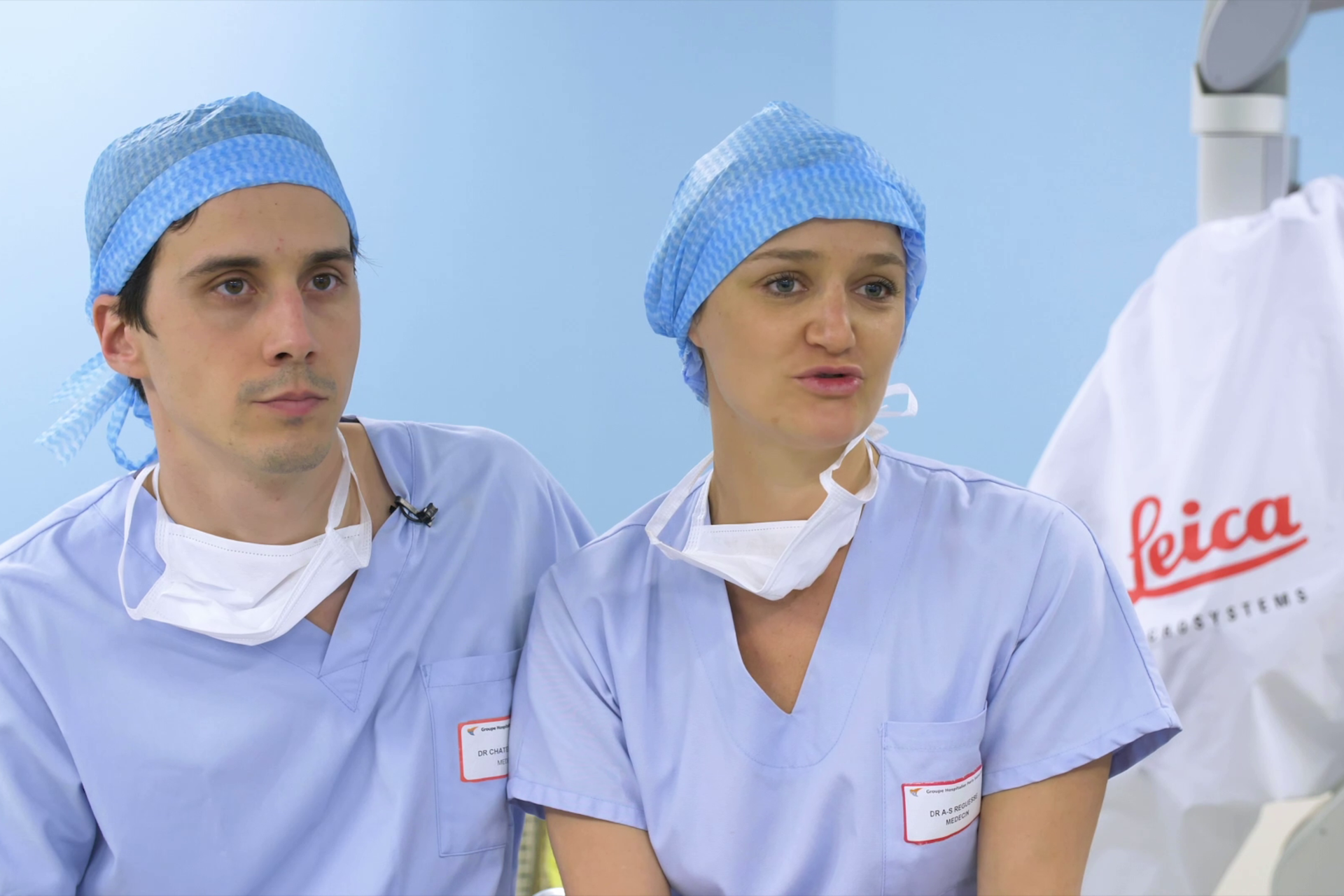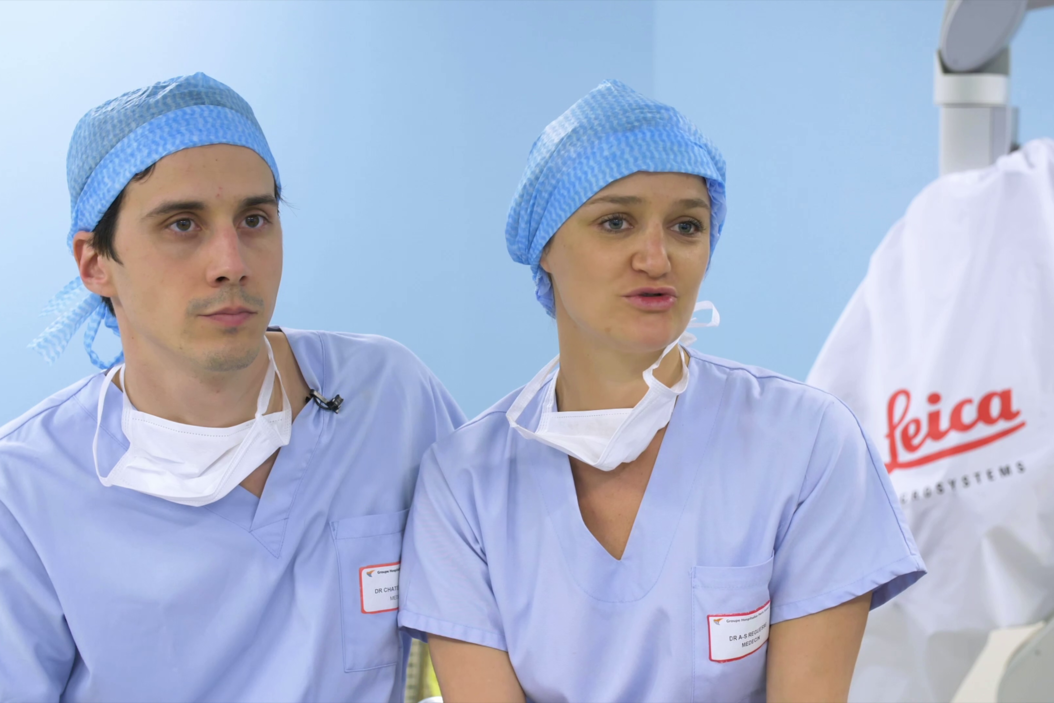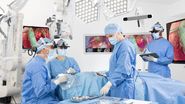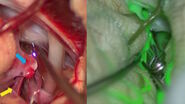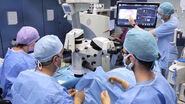Interview Key Highlights
According to Dr. Reguesse, the Leica M530 OHX surgical microscope and integrated vascular fluorescence associated to GLOW800 Augmented Reality can provide significant benefit during mastectomy and breast reconstruction procedures especially when:
- A patient has black skin
- It is hard to evaluate the area of the flap that is well vascularized
- It is important to determine whether the breast skin envelope is well vascularized, for example when an immediate breast reconstruction is performed after mastectomy
This helps optimize the post-operative period and patient recovery after oncological reconstructive surgery.
In addition, Dr. Reguesse and Dr. Chatel appreciate the fact that:
- The Leica M530 OHX surgical microscope is powerful, easy-to-use and very maneuverable
- It is possible to see nearly all the flap at once without having to shift and move the microscope in all directions
- There is no need to turn off the lights in the Operating Room (OR) with GLOW800 fluorescence
- Settings can be configured in advance for different surgeons and applications
- An instrumentalist and operating assistant can remain close to the operating field
- The surgeon can circulate around the patient freely
Video interview with Dr. Anne-Sophie Reguesse and Dr. Harold Chatel
About Dr. Anne-Sophie Reguesse and Dr. Harold Chatel

Dr. Anne-Sophie Reguesse is a Plastic and Reconstructive Surgeon in a leading hospital in Paris, France. She regularly performs oncological reconstructive surgery procedures. While she uses surgical glasses to perform standard plastic and reconstructive surgery procedures, in more complex cases, she turns to the Leica M530 OHX surgical microscope which she believes provides a real added value.

Dr. Harold Chatel is a Plastic and Reconstructive Surgeon in a leading hospital in Paris, France. The hospital is one of the best in the world for oncology according to Newsweek. Dr. Chatel uses the Leica M530 OHX surgical microscope to see more and progress confidently through surgery. The microscope boosts magnification by 40% and light intensity is automatically adjusted minimizing incidents and reducing tissue damage. The integrated FL800 vascular fluorescence helps confirm flap viability.
If you are looking for an alternative to microsurgical glasses or would like to learn more about Leica solutions for plastic and reconstructive surgery, please get in touch. We will gladly answer all of your questions.
